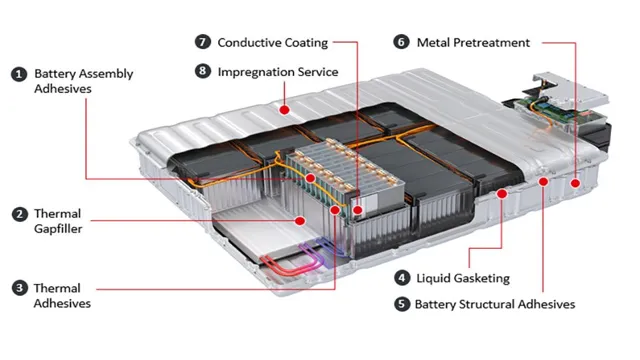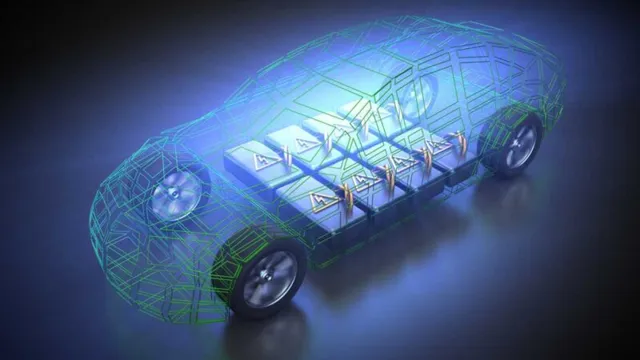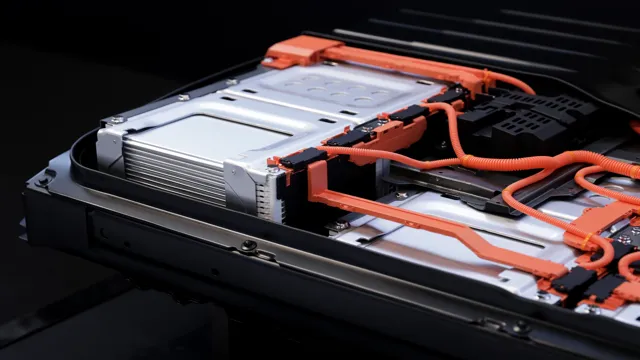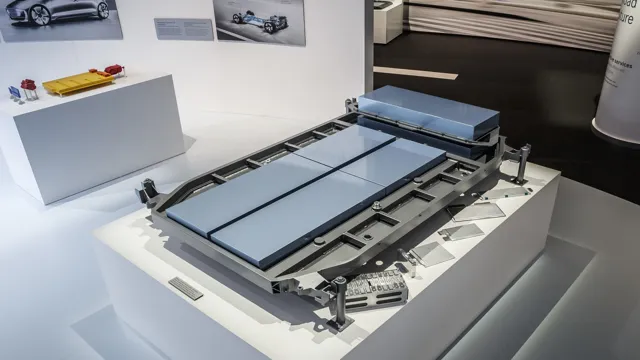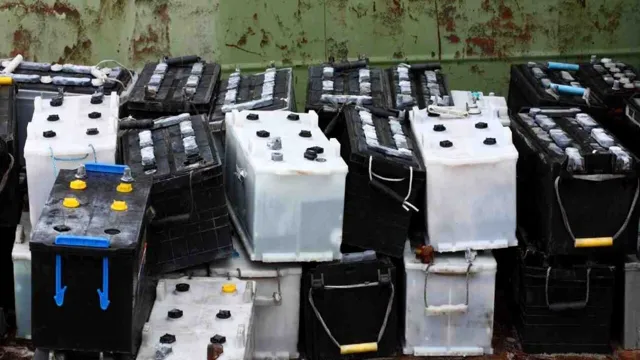Rev Up Your Ride with a DIY Battery Pack for Your Electric Car: A Step-by-Step Guide
Looking to take your electric vehicle off the grid? If you have some basic technical knowledge and are willing to put in some elbow grease, creating your own DIY battery pack for your electric car could be right up your alley! By building a battery pack from scratch, you can customize the size of your energy storage and potentially save money compared to purchasing a pre-made pack. In this blog, we’ll explore the basics of what you need to know to get started, from sourcing cells to understanding voltages and wiring techniques. So, roll up your sleeves and let’s dive into the exciting world of DIY electric car batteries!
Why Build Your Own Battery Pack?
Are you considering building your own DIY battery pack for your electric car? There are several good reasons to do so. First and foremost, it can be a cost-effective alternative to purchasing a pre-made battery pack. Building your own battery pack allows you to customize it to your specific needs and preferences.
You can choose the type and size of batteries you want to use, as well as the configuration and management system. Additionally, by building your own battery pack, you’ll gain valuable knowledge about how your electric car works and how to maintain it properly. Of course, it’s important to note that building a DIY battery pack requires a certain level of knowledge and expertise, so it’s not a project for everyone.
But if you’re up for the challenge, you may find that building your own battery pack is a rewarding and satisfying experience. So why not give it a try? With some research and careful planning, you could be on your way to creating the perfect custom battery pack for your electric car.
Cost Savings
Looking for ways to save on cost if you’re considering building a battery pack for your electronic devices? We’ve got you covered! One of the major reasons why building your battery pack is a wise decision is cost savings. When you build your battery pack, you have the luxury to choose your battery cells and customize your battery pack to your desired voltage, capacity and Amperage range. This helps you save money in the long run as you don’t have to keep buying pack batteries.
You can also decide to replace only the faulty cell instead of getting rid of the entire battery, which saves you a lot of money. With the ever-increasing cost of batteries, building your battery pack is a more affordable alternative. It also gives you the satisfaction of having control over what you use in your battery pack, providing peace of mind and saving money as well.
So why not give it a try and enjoy the benefits it brings?
Customization
Customization When it comes to choosing a battery solution, there are many options available on the market. However, building your own battery pack can offer a unique level of customization and flexibility that pre-made solutions may not offer. By building your own battery pack, you can choose the specific battery cells that will be used, the size and shape of the pack, and even the charging and discharging parameters.
This can be especially beneficial for applications that have specific power and energy requirements, as a homemade pack can be tailored to meet those needs exactly. Additionally, building your own battery pack can lead to cost savings in the long run, as you can replace individual cells as needed rather than having to purchase an entirely new pre-made pack. Overall, building your own battery pack can offer a level of customization and flexibility that is not found in pre-made solutions.
Ease of Maintenance
When it comes to the ease of maintenance of battery packs, building your own can have its benefits. With a pre-built battery pack, you may not have access to the individual cells, making any necessary repairs or replacements more difficult. However, by building your own battery pack, you have full control over the maintenance process and can easily swap out any damaged or worn cells.
Plus, having a modular design can also allow for easy upgrades or modifications in the future. Overall, taking the time to build your own battery pack can save you headaches and money in the long run. So why not give it a try?
Types of Lithium-ion Batteries
If you’re looking to build a DIY battery pack for an electric car, it’s important to understand the types of lithium-ion batteries available. The two most popular types are lithium iron phosphate (LiFePO4) and lithium nickel manganese cobalt oxide (LiNiMnCoO2), also known as NMC. LiFePO4 batteries are known for their high cycle life and safety, making them a great option for electric vehicles.
On the other hand, NMC batteries have a higher energy density, which means they can hold more power in a smaller space, but may not last as long overall. It’s important to choose the right type of battery for your DIY project based on your specific needs and priorities. Additionally, always be sure to follow proper safety precautions when building and using a battery pack.
With the right knowledge and precautions, a DIY battery pack can be a cost-effective and customizable solution for powering an electric car.
Lithium iron phosphate (LiFePO4)
Lithium iron phosphate (LiFePO4) Lithium-ion batteries are the go-to choice for most portable electronic devices today. Out of all the different types of lithium-ion batteries, lithium iron phosphate (LiFePO4) is quickly becoming a popular option in many industries due to its unique properties. LiFePO4 batteries are known for their high energy density, long cycle life, and incredible thermal stability.
They are also incredibly safe and do not pose a fire risk like other types of lithium-ion batteries, making them an ideal choice for applications such as electric vehicles and renewable energy storage systems. Despite their numerous benefits, LiFePO4 batteries are still relatively new and can be more costly than other types of lithium-ion batteries. However, as the demand for cleaner, more sustainable energy sources continues to grow, LiFePO4 batteries are sure to become a more common sight in our daily lives.
Lithium manganese oxide (LMO)
Lithium manganese oxide, also known as LMO, is a popular type of lithium-ion battery due to its high thermal stability and low cost. LMO cells use a manganese oxide cathode, which makes them safer and more stable than other types of batteries. They also have a high energy density, which allows for longer lasting charge and better performance in high-drain devices.
LMO batteries are commonly used in power tools, electric bicycles, and even some electric vehicles. However, they do have limitations, such as a lower cycle life compared to other lithium-ion batteries. Despite this, LMO remains a popular choice for many applications due to its balance of performance and affordability.
Lithium nickel cobalt aluminum oxide (NCA)
Lithium nickel cobalt aluminum oxide (NCA) is a type of lithium-ion battery that is known for its high energy density and long cycle life. NCA batteries are commonly used in electric vehicles and portable electronic devices due to their ability to provide a lot of power in a small size. These batteries contain nickel, cobalt, and aluminum as well as a lithium ion electrolyte that allows for the flow of electricity.
One of the benefits of NCA batteries is their ability to maintain their performance even after many charge and discharge cycles. This makes them a popular choice for applications that require high power output, such as electric cars and power tools. While NCA batteries have many advantages, they are also more expensive than other types of lithium-ion batteries, making them less practical for certain applications.
Steps for Building a DIY Battery Pack
Are you interested in building your own DIY battery pack for your electric car? While it may seem like a daunting task, it’s actually quite simple with the right steps. First and foremost, you’ll want to determine the voltage and capacity requirements for your specific electric car. Once you have this information, you can begin to source the individual lithium-ion cells needed for your battery pack.
It’s important to source high-quality cells from a reputable supplier to ensure a safe and reliable battery pack. Next, you’ll need to connect the cells in a series and parallel configuration according to your voltage and capacity needs. You’ll also need a battery management system to ensure proper charging, discharging, and balancing of the cells to extend the lifespan of your battery pack.
Overall, creating a DIY battery pack for your electric car can be a rewarding and cost-effective solution, as long as you take the time and care to properly source and assemble the components.
Determining Your Power Needs
If you’re thinking about building a DIY battery pack, one of the first things you’ll need to determine is your power needs. This will vary depending on what you plan to use the battery pack for. For example, if you’re building a portable power bank to charge your phone and other small devices, you won’t need as much power as if you’re building a battery pack for an electric skateboard or DIY electric vehicle.
Once you have determined your power needs, you can start gathering the necessary components and materials. These may include batteries, a battery management system, a charging circuit, and a housing to hold all the components securely.
When selecting batteries, pay attention to the voltage and capacity ratings.It’s important to choose batteries with similar ratings to ensure they work together properly. Additionally, you’ll want to choose a battery chemistry that is appropriate for your application, such as lithium-ion for a portable power bank or lithium iron phosphate for an electric vehicle. Assembling the battery pack will require some basic electrical knowledge and safety precautions, such as wearing gloves and eye protection and avoiding short circuits.
It’s important to follow guidelines and instructions closely to ensure your battery pack is safe and reliable. In conclusion, building a DIY battery pack can be a fun and rewarding project, but it requires careful planning and attention to detail. By determining your power needs and selecting the right components and materials, you can create a custom battery pack that meets your specific needs.
Selecting the Right BMS
When it comes to building your own DIY battery pack, selecting the right Battery Management System (BMS) is crucial. Here are the key steps you need to follow to ensure you choose the right one for your needs. Firstly, determine the size and voltage requirements of your battery pack, as this will affect the BMS you need.
Secondly, think about the charging and discharging rate of your battery pack as different BMS models have varying charging and discharging rates. Thirdly, consider the type of cells in your battery pack as different BMS models have different cell compatibility. Fourthly, think about the level of protection you require for your battery pack against overcharging, overheat, and over-discharging, as different BMS models offer different protection levels.
Lastly, consider the price of the BMS model you want to use as you don’t want to compromise on safety and quality for a cheaper price. By following these steps and selecting the right BMS, you’ll be on your way to building your own safe and reliable DIY battery pack!
Assembling the Battery Cells
When assembling the battery cells for your DIY battery pack, there are some crucial steps to follow. Firstly, you need to choose the right battery cells to use. It’s important to select ones with similar capacities and discharge rates.
Next, arrange the cells in a series or parallel fashion to achieve the desired voltage and capacity. Be sure to use proper safety measures while doing this, such as wearing protective gear and using insulated tools. Once you have your battery cells arranged, you need to connect them using nickel strips or copper wire.
This requires a spot welder or soldering iron, which should also be done with caution. It’s crucial to avoid overheating the cells or creating any short circuits that could damage the battery. Overall, assembling the battery cells for your DIY battery pack requires precision, attention to detail, and safety precautions throughout the entire process.
Charging and Discharging Your Battery Pack
Building a DIY battery pack for an electric car is a complex but rewarding process that requires a good understanding of basic electrical concepts. Charging and discharging the battery pack is also a crucial aspect of maintaining its performance and longevity. When it comes to charging, it’s important to use a charger that is compatible with the battery chemistry and capacity of your pack.
Using the wrong charger or overcharging can lead to damage, reduced capacity, and even safety hazards. On the other hand, discharging the battery pack beyond its recommended depth of discharge can also shorten its lifespan. It’s crucial to monitor the state of charge and discharge regularly and recharge the battery pack before it reaches its minimum voltage.
A well-maintained battery pack can provide reliable and efficient power to your electric car for years to come. So, remember to invest in a good quality charger and monitor your battery pack’s state of charge and discharge to get the most out of your DIY electric car project.
Charging Methods
Charging and Discharging Your Battery Pack Keeping your battery pack properly charged is essential to ensure that your electronic devices operate reliably and efficiently. Charging your battery pack can be done using a variety of methods, including using a power bank, a wall charger, or a USB cable connected to a computer or laptop. It’s important to use the appropriate charging method for your particular battery to ensure maximum efficiency and longevity.
It’s also important to avoid overcharging your battery pack, which can damage the cells and reduce their overall lifespan. Discharging your battery pack completely on a regular basis can also help to maintain its overall health and performance. Overall, understanding the best methods for charging and discharging your battery pack can help to keep your electronic devices running smoothly and reliably.
Discharging Methods
Discharging Methods Discharging your battery pack is an important process that should not be overlooked. There are different methods to discharge your battery pack, but the most common is the constant resistance discharge method. This method involves connecting a power resistor to the battery pack and allowing the current to flow until the battery voltage drops to a certain level.
The resistor is chosen so that the discharge current remains constant throughout the process. Another method is the constant current discharge method, which is used to test the battery’s capacity. In this method, a constant current is drawn from the battery until the voltage drops to a specified level.
The time taken to discharge the battery is used to calculate its capacity. The third method is the pulse discharge method, which is used for high-current applications. In this method, the battery is discharged in short pulses using a high-current load.
The time between pulses is used to allow the battery to recover its voltage. This method is useful for testing the battery’s ability to deliver power in bursts. Choosing the right discharging method is important to ensure the battery’s longevity and performance.
Constant resistance discharge is preferred for most applications, as it provides a steady discharge current that is easy to measure and control. However, in high-current applications, pulse discharge is the preferred method to test the battery’s ability to deliver power in short bursts. No matter what discharging method you choose, it is important to monitor the battery voltage and temperature throughout the process.
Discharging a battery too quickly or to a low voltage can damage the cells, reducing their capacity and lifespan. Always adhere to the recommended discharge rates and limits specified by the battery manufacturer to achieve optimal battery performance and longevity.
Safety Precautions When Building and Using a DIY Battery Pack
If you’re building a DIY battery pack for your electric car, it’s important to prioritize safety. First and foremost, you should choose quality components and materials. Using subpar components can put you at risk of short circuits, fire, or even explosion.
When assembling your battery pack, follow a detailed guide to ensure it’s constructed correctly. Pay attention to the wiring and make sure everything is connected properly. Don’t rush the process and take your time to avoid mistakes.
Once your battery pack is assembled, it’s important to test it before using it in your vehicle. Check for any irregularities or signs of malfunction. When using your DIY battery pack, make sure to store it safely, away from heat or moisture.
And always monitor your battery pack’s performance, as any significant change or malfunction can compromise your safety. Ultimately, building a DIY battery pack for your electric car can be fulfilling, but you should prioritize safety every step of the way.
Conclusion
In conclusion, building a DIY battery pack for your electric car may seem like a daunting task, but it’s not impossible. With the right knowledge, dedication and a few YouTube tutorials, you can create a reliable and cost-effective power source that will have your car cruising down the road in no time. Plus, you’ll have the bragging rights of saying you built your own battery pack – and that’s pretty darn cool.
So don’t be afraid to get your hands dirty and dive into the world of DIY electric car battery packs – your wallet (and the environment) will thank you!”
FAQs
What components are needed to build a DIY battery pack for an electric car?
To build a DIY battery pack for an electric car, you’ll need cells, a battery management system, wiring, connectors, and other necessary equipment.
How can I ensure the safety of a DIY battery pack for my electric car?
Safety is critical when building a DIY battery pack for your electric car. To ensure safety, use high-quality components, follow correct wiring and installation procedures, and choose a battery management system with built-in safety features.
Can I save money by building my own battery pack for my electric car?
Building a DIY battery pack can be cost-effective compared to buying a pre-built battery pack. However, it requires extensive knowledge and skills to ensure the pack’s safety, performance, and longevity.
Is it legal to build and use a homemade battery pack for my electric car?
It’s legal to build and use a homemade battery pack for your electric car, but you need to comply with local safety, technical, and environmental regulations. Before building your DIY battery pack, check the regulations in your area and consult with experts if necessary.

